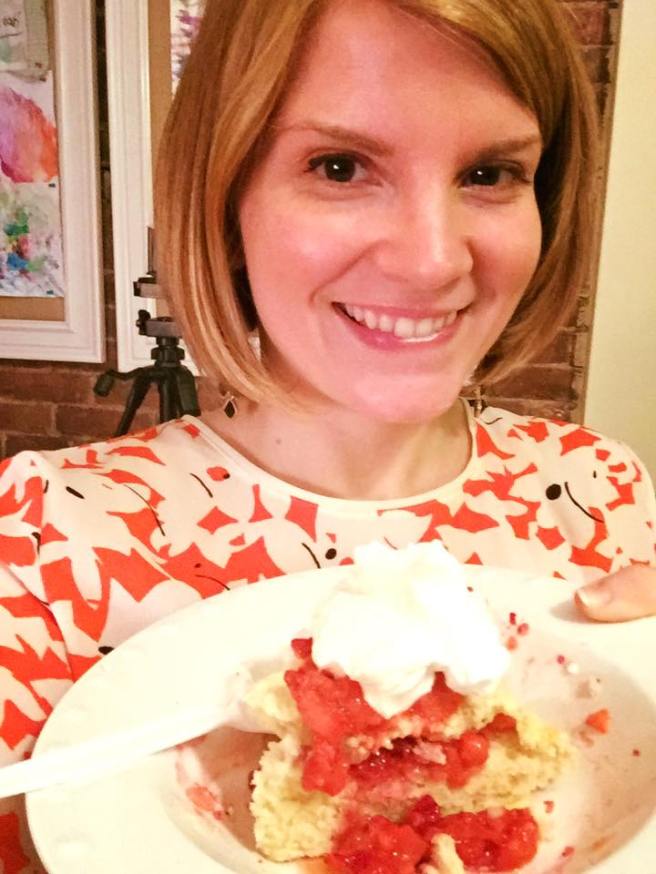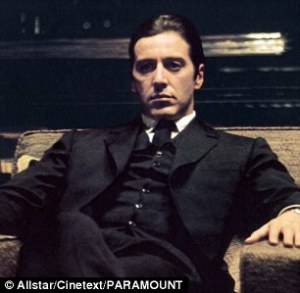
Spiritual Science and Strawberry Shortcake


If there is one commandment beaten over the head of every writer who dared put pen to page (or finger to key) it is this: conflict drives character, and character drives plot. This is particularly true of the romance genre, but can be said for any form of writing or entertainment. To create the deepest conflict, put a character’s unconscious, internal needs in opposition to their conscious, external behaviors and/or wants.
For example, a man needs to feel loved but the idea makes him feel weak, unworthy and subject to rejection and abandonment, so, he does everything in his power to push love away. It’s a basic formula and yet it produces blockbusting characters such as Edward from Twilight, and Mr. Grey from Fifty Shades. Some say it’s the darkest parts of ourselves that are drawn to these vexingly sexy creatures. I would argue, however, it’s the contrast that piques our interest—the striving to be something better than what we perceive ourselves to be. And nothing shines so bright against a black backdrop, than an unexpected act of kindness.
There are three kinds of kindness, each one coloring your character in different ways. Whether your protagonist is a villainous hero or a heroically-disguised snake in the grass, it’s helpful to know what kindnesses landed him or her in your plot and what role he or she will play.
 1. Conditional Kindness: This form of kindness is based on the humanistic theory of conditional worth posited by psychologist, Carl Rogers. Rogers believed for a person to grow (emotionally, mentally, and spiritually), he needs an environment that provides him with genuineness (openness and self-disclosure), acceptance (being seen with unconditional positive regard), and empathy (being listened to and understood). Without these, relationships and healthy personalities will not develop as they should, much like a tree will not grow without sunlight and water. He also believed when a person achieves their goals in life, self-actualization takes place. As writers, we might think of self-actualization as the protagonist’s “return with the elixir” (according to Christopher Vogler, author of THE WRITER’S JOURNEY), or the final resolution that brings the character’s story arch full circle.
1. Conditional Kindness: This form of kindness is based on the humanistic theory of conditional worth posited by psychologist, Carl Rogers. Rogers believed for a person to grow (emotionally, mentally, and spiritually), he needs an environment that provides him with genuineness (openness and self-disclosure), acceptance (being seen with unconditional positive regard), and empathy (being listened to and understood). Without these, relationships and healthy personalities will not develop as they should, much like a tree will not grow without sunlight and water. He also believed when a person achieves their goals in life, self-actualization takes place. As writers, we might think of self-actualization as the protagonist’s “return with the elixir” (according to Christopher Vogler, author of THE WRITER’S JOURNEY), or the final resolution that brings the character’s story arch full circle.
A large impediment on the path to self-actualization, is the presence of conditions of worth. In other words, tit for tat. You scratch my back, I’ll scratch yours. You can’t get something for nothing. If you want to create a deeply conflicted character that struggles with emotional openness and vulnerability, give him or her a context in which emotional needs are conditionally met.
For example, perhaps your protagonist has grown up believing if they don’t join the family business he will be ostracized from his or her loved ones, or the larger community. This is a major threat because it challenges the character’s sense of self and identity. It also creates a lot of gray areas that manipulate your readers’ perceptions of a “good” or “bad” character. Think Al Pacino in The Godfather.
2. Manipulative Kindness: This is when someone uses seemingly selfless acts of kindness to trick you into perceiving them as essentially good and honorable. Why? For two reasons.
 Because he is deceiving you for personal gain. Somewhere along the line, this person or character learned sincerity was detrimental to getting what he needed and/or wanted. To cope, he developed a mask, or “persona,” (as psychoanalyst Carl Jung referred to it) to present to the world, paving the path of least resistance. These are usually the type of villains that show up as overly helpful friends in the beginning of a story, and by the end, the protagonist comes to realize this character is always around to lend a helping hand, because he orchestrated every catastrophic event. Although these characters have a clear sense of who they really are and what they want (which is usually an external, physical goal), unfortunately, they don’t really care if it is selfish or immoral. Think Prince Hans in Disney’s Frozen.
Because he is deceiving you for personal gain. Somewhere along the line, this person or character learned sincerity was detrimental to getting what he needed and/or wanted. To cope, he developed a mask, or “persona,” (as psychoanalyst Carl Jung referred to it) to present to the world, paving the path of least resistance. These are usually the type of villains that show up as overly helpful friends in the beginning of a story, and by the end, the protagonist comes to realize this character is always around to lend a helping hand, because he orchestrated every catastrophic event. Although these characters have a clear sense of who they really are and what they want (which is usually an external, physical goal), unfortunately, they don’t really care if it is selfish or immoral. Think Prince Hans in Disney’s Frozen. Because if you believe he is good, he’ll believe it too. Inside, these characters are usually fractured due to a terrible life event or childhood, and harbor a lot of repressed anger and pain. Instead of confronting it, they learned to cope by layering fantasies of goodness and perfection on top; fantasies they need desperately to believe.
Because if you believe he is good, he’ll believe it too. Inside, these characters are usually fractured due to a terrible life event or childhood, and harbor a lot of repressed anger and pain. Instead of confronting it, they learned to cope by layering fantasies of goodness and perfection on top; fantasies they need desperately to believe.But this stacks a house of cards on a cracked foundation. On the one hand, this type of person or character is very seductive and lavishes you with attention and affection. Then, for seemingly no reason, he not only takes it all back, but punishes you for “making” him act in a way that leaves him feeling intolerably vulnerable. The Diagnostic and Statistical Manual of Mental Disorders (DSM) might classify these types of characters as “Narcissistic” or “Borderline.” Equally, people who grew up in families with serious alcoholism or addiction are likely to be familiar with this erratic pattern of relating (according to Dr. Janet Woititz, New York Times Best-Selling author on addiction, and author of STRUGGLE FOR INTIMACY).
Conditional Kindness may not encourage self-actualization, but at least it behaves predictably. This is more like, “There is nothing you can say or do because you are merely a mirrored reflection of the psychodrama going on inside my head.” Think Joan Crawford in Mommie Dearest. Or the husband from the classic flick, Gaslight.
 3. Cathartic Kindness: This is just what it sounds like, the kind of kindness that breeds its own reward. One might argue you cannot call it a “selfless” act because selfless acts make us feel good about ourselves—but that’s okay. Actually, that’s a good thing. And the better you feel about yourself, the kinder you are towards others. In fact, researchers at University of California, Los Angeles, and University of Cambridge and University of Plymouth in the United Kingdom have proven kindness is contagious.
3. Cathartic Kindness: This is just what it sounds like, the kind of kindness that breeds its own reward. One might argue you cannot call it a “selfless” act because selfless acts make us feel good about ourselves—but that’s okay. Actually, that’s a good thing. And the better you feel about yourself, the kinder you are towards others. In fact, researchers at University of California, Los Angeles, and University of Cambridge and University of Plymouth in the United Kingdom have proven kindness is contagious.
Researchers performed two experiments in which they showed viewers either a nature documentary, a funny TV clip or an uplifting segment from the Oprah Winfrey Show, and then asked them to voluntarily help with another task. In both cases, participants that watched Oprah and subsequently experienced the elevated feeling were more likely to help.
“When you feel this sense of moral ‘elevation’ not only do you say you want to be a better person and help others, but you actually do when the opportunity presents itself,” said lead researcher Simone Schnall of Cambridge. “Human nature is essentially good. And this study proves that seeing good things actually makes us better.”
In another study, designed to identify cause-and-effect links, people were divided into groups of four, given 20 credits each, and asked to secretly decide what to keep for themselves and what to contribute to a common fund. When political scientist James Fowler of the University of California, San Diego, and medical sociologist Nicholas Christakis of Harvard University, analyzed the results of this so-called public-goods game, they found when one person gave, others in their group tended to be generous during the next two rounds of play. Recipients of their largess became more generous in turn, and so on down the chain. When a punishment round was added — players could spend their own money to reduce the rewards of selfish players — generosity lasted even longer.
As a writer, this kind of generosity is most effective when enacted at a pivotal moment in your character’s emotional development. Make your character work his or her way up, and the rewards will be ten times more satisfying. This is true for both the protagonist and the antagonist.
For example, in the movie Kinyarwanda, a teenager is confronted with her parents’ killer, and he begs her forgiveness. As an audience member, all you want is for her to punish him for what he has done. Instead, she forgives him, and you realize true victory is hers. For an example of a villain transforming through kindness, Darth Vader in Star Wars, starts off as a terrible enemy, but by the end of the series, he sacrifices his life to save his son, and redeems his soul.
Whether you are developing a villainous character or a protagonist with a heart of gold, layering his actions with the appropriate form of kindness can add dimension to his internal conflicts, and enrich your story arch. The more you layer, the harder your protagonist has to work to dig himself out, and the better your best-seller will sell. For more tips on building better character, please see my blog post, 7 Steps to Credible Character Conflict.